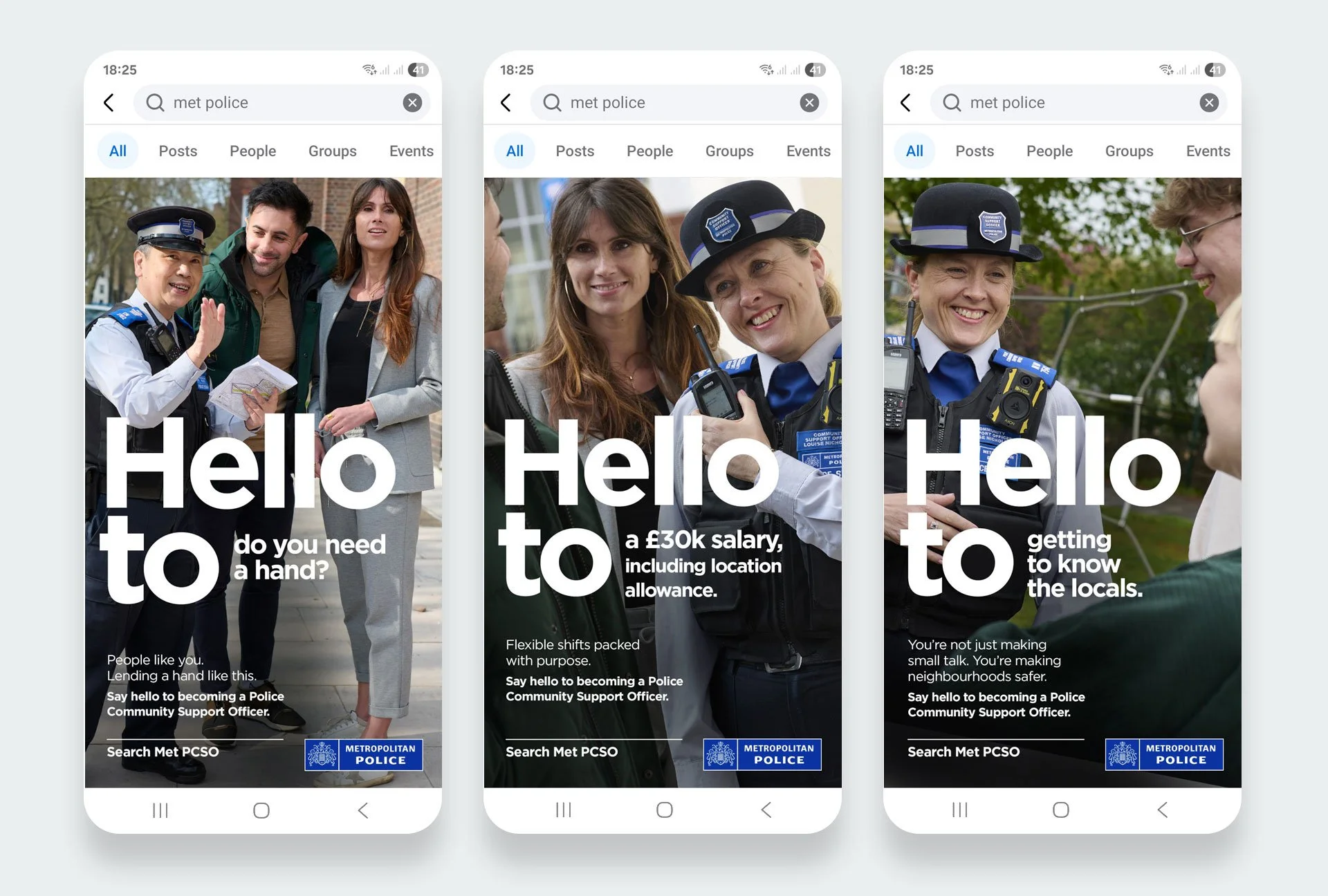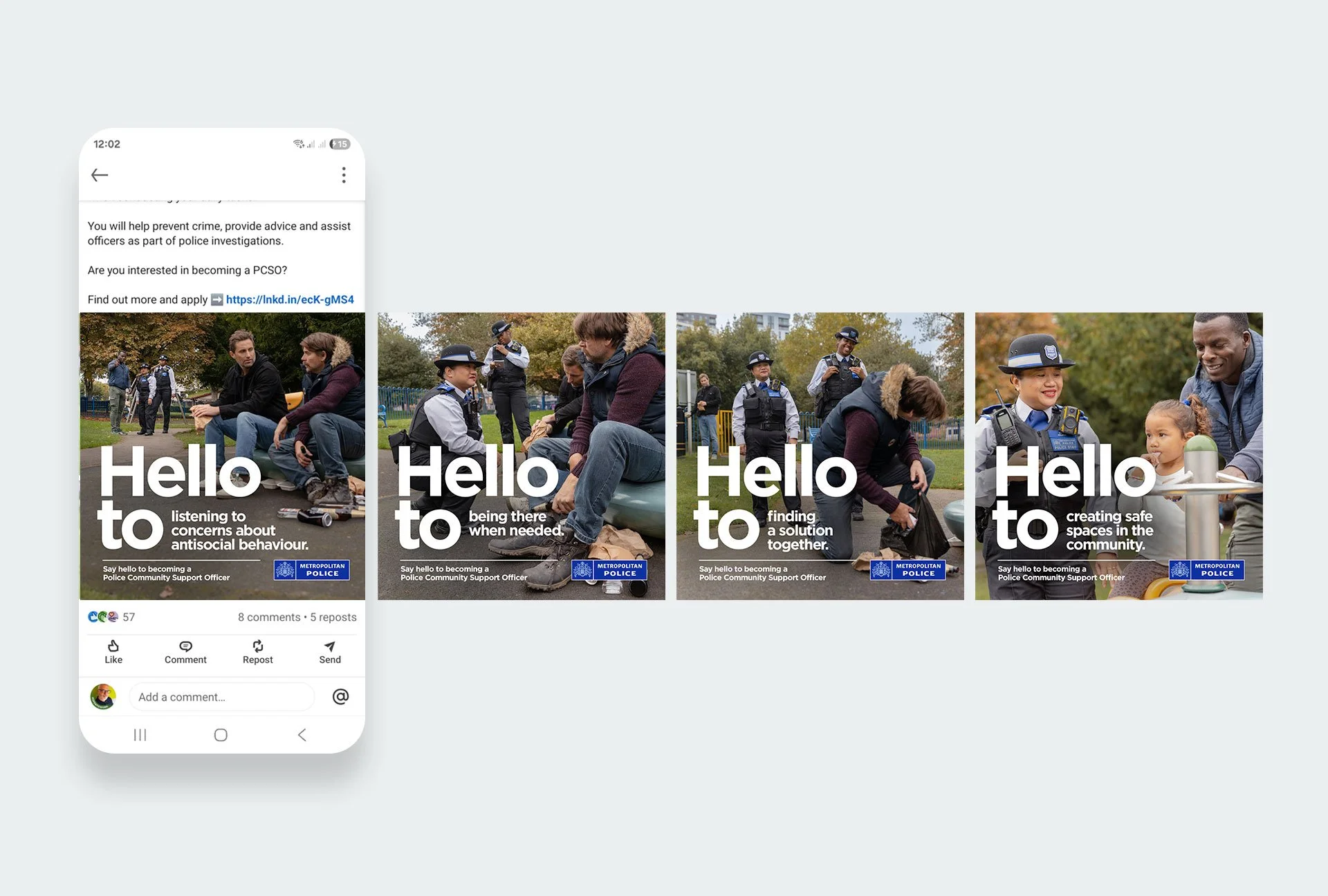The Metropolitan Police PCSO recruitment campaign
The challenge
Any campaign for The Metropolitan Police is going to be difficult. To add to that, research showed that the sentiment from London-based Black and South Asian communities towards working for them was very low. So the challenge was to recruit PCSOs from an audience who hadn’t heard of the role. And those that did know about PCSOs but had no idea of what the role involved and how they differ from a PC. The campaign could not be mistaken for the PC role.
The solution
The solution, was to show this role is not confrontational. A PCSO is there to help, not to respond. They communicate with the local community, as they’re part of that community. They check in and look out for the vulnerable in society. Thier presence makes people feel safer. And finally, they can give a real insight into what is happenning in an area and help solve and reduce high crime areas.
To perform in this role, we discovered that conversations are at the heart of everything a PCSO does. It’s all about being friendly, approachable and visible. And there’s one word a PCSO uses more than any other, Hello.
The entire campaign was built on that sentiment. It educated potential candidates with real-life scenarios and actual PCSOs. Over the campaign period, the Met Police saw more recruits in 18 months than in the previous 10 years, with over 7,000 applications in total. More importantly, they saw a 93% increase in BAME applications, and an increase of over 131% of hires from those in the Black community.
Not only was this campaign multi-award winning, but due to the knock-on success it had in the community, even when it wasn’t live, the met were recieving over 400 applications a month, which was groundbreaking and far exceeded any expectations.
Campaign film for ITVx
As part of the campaign, there were three films required. A 15 second, 30 second and 1 minute edit. The version here is the 1 minute edit.
All three were shown on ITVx and targetted the Metropolitan Police area and specific demographic.
Careful planning was required to ensure these were realistic scenarios, all filmed in one of the London boroughs. Instead of actors, actual PCSO’s were involved from the outset. They provided the scenarios, such as helping a homeless person, and featured in the shoot. These then formed the basis of the shorter social films, where these scenarios were discussed in more depth.
Social posts
During the second year of the campaign, more personal stories from current serving PCSOs were brought to life. Using these real life scenarios allowed for true personality, culture and background of the individual to come through. They showed the reality of the role and the powerful impact they can have on the local community.










